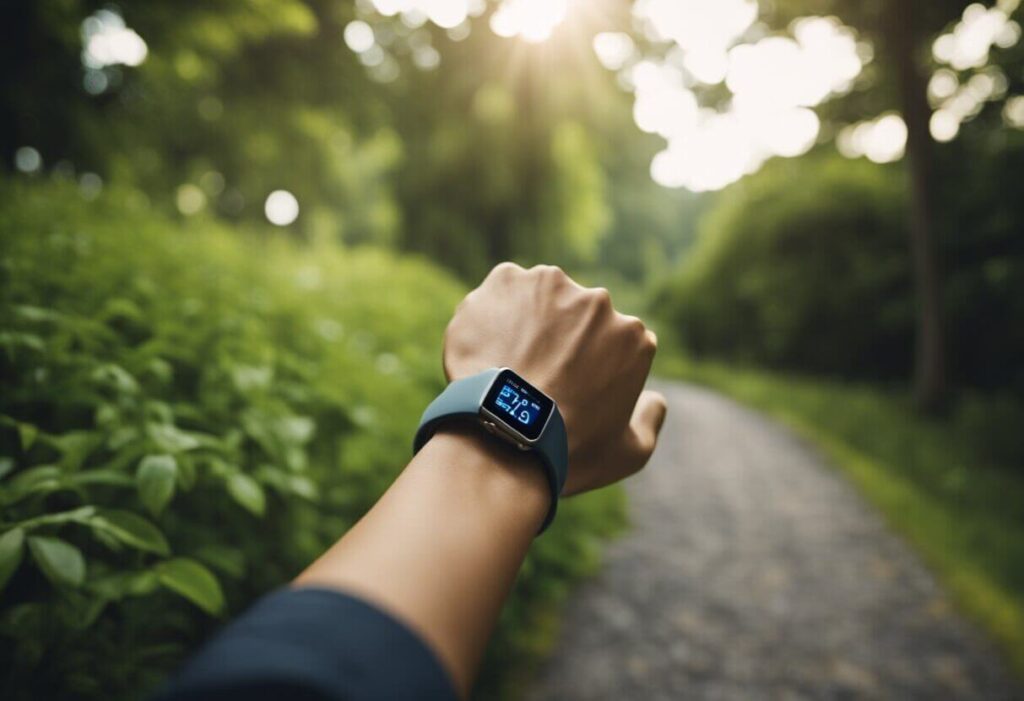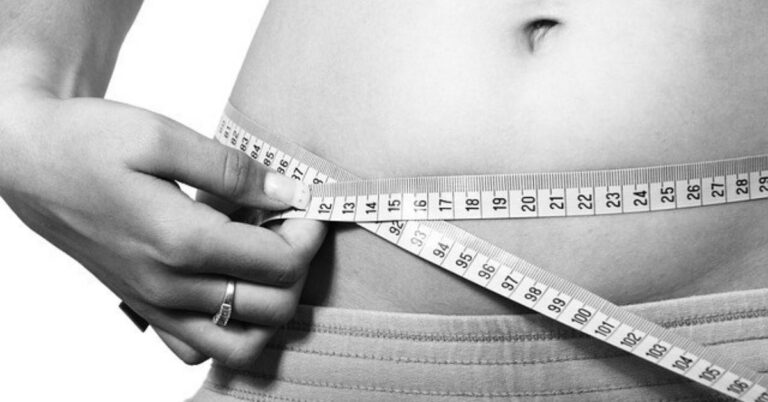When it comes to boosting your physical health, strapping on a pair of comfortable trainers and going for a walk might just be one of the most straightforward fitness choices you can make.
You’ve probably heard that walking is a superb way to keep active, but you might wonder how long it will take before you start to see your body change from this simple yet effective form of exercise.
The good news is that walking for fitness isn’t just a breeze to fit into your daily routine; it also packs a punch when it comes to delivering tangible fitness benefits.

Now, it’s one thing to understand the importance of walking, but another to see those results mirror back at you.
While everyone’s body reacts differently, with variability based on factors like intensity and frequency, studies suggest visible improvements can start to manifest within 8 to 12 weeks of consistent walking.
Be patient with yourself and remember that the journey to better health through walking is not a sprint, but a pleasant, life-enhancing marathon.
The Basics of Walking for Fitness

Understanding How Long You Should Walk For
To reap the health benefits of walking, familiarize yourself with the current physical activity guidelines.
For adults, it’s recommended to engage in at least 150 minutes of moderate-intensity aerobic activity, like brisk walking, each week.
This can be broken down into manageable chunks—for instance, 30 minutes a day for 5 days a week.
How Quickly Should You Walk?
Walking intensity levels can vary from a gentle stroll to a vigorous power walk. Moderate activity such as brisk walking raises your heart rate and makes you breathe faster.
On the other hand, walking at a more relaxed pace counts as light intensity, which, while beneficial, may not significantly improve your cardiorespiratory fitness.
What Is Better? Walking Faster Or Walking For Longer?
When you’re keen to see body changes from walking, you might wonder if it’s better to pick up the pace or stretch out the distance.
Walking at a brisk pace is shown to correlate with reduced risk of premature mortality, especially from cardiovascular disease (CVD).
If your days are packed, and time is scarce, speeding up your walk can do wonders.
It’s similar to cramming a bit more punch into a shorter workout, boosting your cardiovascular health without needing to carve out extra time. For instance, a study on walking pace suggests significant health benefits simply from walking briskly.
If you’re a cancer survivor or dealing with other health challenges, improving your walking speed could be pivotal. It’s linked not just to a better quality of life but also to increased longevity.
So how fast is fast enough? According to a study published in Mayo Clinic Proceedings, you should be aiming for 4 miles per hour for the most benefit from your walk.
So while a leisurely walk might be good for your mood, you won’t be getting the full benefits without picking up the pace a little!
Health and Body Benefits
Walking is much more than just a way to get from point A to point B. It’s actually a powerhouse of an exercise that can transform your physical health without the intimidating complexity or cost of other fitness activities.
You don’t need fancy equipment or a gym membership; just your own two feet and the will to move.
Starting out on a walking routine can significantly enhance your fitness and health. It’s a simple, yet effective form of physical activity that requires minimal equipment and can be done almost anywhere.
When you incorporate a steady routine of walking into your life, you might be surprised at the variety of health benefits you can reap. From bolstering muscle power to enhancing your cardiovascular system, you’ll discover numerous perks.
Impact on Muscles and Strength
Regularly hitting the pavement can lead to noticeable changes in your muscle tone, body composition, and overall energy levels. The beauty of walking is its inclusiveness—regardless of age or fitness level, you can start seeing positive changes in your body.
Walking is an effective form of aerobic exercise that steadily challenges your muscles. Increased walking steps can lead to improved musculoskeletal health, enhancing the strength and endurance of your leg muscles. Your bone health can also see benefits, as this weight-bearing activity boosts bone density.
Improving Cardiovascular Health
Regular walking increases your heart rate, thus improving cardiovascular fitness and promoting healthy blood flow. Each step taken can incrementally reduce the risk of heart disease and stroke, reflecting the significant cardio benefits that walking provides. Higher daily step counts are linked with a sizable decrease in heart risk.
Weight Loss and Body Fat Reduction
Going for a walk can help burn calories and facilitate fat burning.
Regular walks can play a pivotal role in weight loss and body fat reduction, especially when complemented by a balanced diet. Tackling obesity is possible with walking, as it’s been proven to help manage body fat, particularly around the abdomen.
Enhancing Mental Health and Mood
Not only does walking benefit physical health, but it is also a boon for mental wellbeing. It triggers the release of endorphins, which alleviate tension and improve your mood.
Regular walkers often experience a reduction in depression symptoms and an uplift in their overall mental health. Walking has immediate effects, such as a boost in memory and concentration, and long-term benefits, including protection against type 2 diabetes.
What Factors Influence Your Progress?

When you start walking for fitness, your progress is shaped by several factors. Understanding how they affect you can maximise the benefits you gain from your efforts.
The Role of Age and Weight
Age plays a role in how quickly you’ll see changes. Younger individuals might notice improvements in muscle tone and energy levels faster due to a generally higher metabolic rate. However, whatever your age, walking can help increase bone density and enhance coordination, making it a great exercise for all age groups.
Your weight also influences progress. If you’re heavier, you might see a more rapid change in terms of pounds lost, especially if you walk regularly. Remember, consistency is key, and as you build up your walking routine, you’ll likely see a steady progression in your fitness levels and weight management.
Influence of Diet and Nutrition
What you eat is just as important as your walking routine. A balanced diet that’s rich in nutrients can support the energy you need to maintain intensity and duration during your walks. Reducing high-cholesterol foods and incorporating more fruits, vegetables, and whole grains can complement your physical activity for better results.
Make sure your eating habits align with your fitness goals—protein for muscle repair, carbohydrates for energy, and healthy fats to support cell growth. Tailoring your nutrition to your exercise needs will make your progress more noticeable.
Incorporating Various Exercises and Activities
Just walking might not hit all your muscle groups. It’s beneficial to include strength training or other exercise classes to improve overall fitness. This could mean doing body-weight exercises at home or joining a local gym.
Mixing in different activities can maintain your interest and motivation, and it challenges different parts of the body, which can result in comprehensive fitness improvements. Consider throwing in some yoga or pilates for flexibility and core strength. Keep varying your routine to work on different muscle groups, and you’ll not only stave off boredom but also promote better overall coordination and physical adaptation.
Remember, your individual differences—such as genetics and lifestyle—will also affect how quickly you see changes. So, while frequency of walking, intensity of exercise, and duration of walks are crucial for your progression in walking, don’t discount the importance of a routine that suits your unique situation. Walk confidently, knowing that with each step you’re on your way to achieving your personal health and fitness objectives.
Real-Life Examples and Success Stories

Walking is a simple, accessible form of exercise that can lead to significant body changes over time. People often wonder how long it might take to see these changes, and while everyone’s journey is unique, some inspirational stories can shed light on what to expect.
Fitness Journey:
One such example comes from the Minutes in Motion programme. Leah started walking for 30 minutes every day. Within three years, not only did she lose 90 pounds but also gained a new zest for life. Her story highlights that consistent walking can lead to both weight loss and an overall better quality of life.
Personal Transformation Testimonials:
While walking doesn’t always show immediate transformations, it’s the small steps that add up. As noted by some participants of fitness programmes, realising that they could walk a bit further each day or feeling more energised were early signs of progress.
Take this guy. Losing 330lbs just by walking daily! If that’s not inspiration enough then I don’t know what is!
Walking Success and Fitness Achievements:
The physical changes often accompany the emotional boost. You might find yourself like many others who after a few months of regular walking, not only see a change in their stamina and muscle tone but also experience an improved mood and a stronger sense of wellbeing.
Remember, your body adapts at its own pace. For some, you might see progress within weeks; for others, it might take several months. But each step you take is a step towards a healthier you.
Keep lacing up those trainers and hitting your stride; your success story might just be around the corner.
How Long Does It Take To See Body Changes From Walking?
Making the effort to walk 30 minutes or more on a daily basis will likely result in some initial benefits. Over 3-6 months of consistent 30-minute daily walks will translate to significant fat loss, notable improvements in strength and muscle tone as well as better heart health. When accompanied by a nutritious diet, regular 30-minute walking workouts help generate the calorie deficit required for weight loss.
Walking for at least 30 minutes burns around 200-250 calories, especially if you choose a brisk pace. Adding weights or walking on an incline can elevate calorie expenditure even further. You’ll also feel the benefit of reduced stress levels and lower risk of cognitive decline.
To summarise, to reap the rewards of daily 30 minute walks requires patience, consistency and discipline as results generally unfold over many months rather than weeks. Focus on incorporating walking into your lifestyle on an ongoing basis and enjoy the invaluable physical, mental and emotional gains that follow.
When you start incorporating walking as a regular part of your fitness routine, the changes in your body composition and overall health won’t happen overnight. It’s a gradual journey that requires commitment, but patience and consistency are key to seeing results.
The Importance of Consistency
Consistency is the bedrock of a successful fitness endeavour. To burn calories and improve your muscle tone, establishing a walking habit is essential. If you walk regularly, you might start noticing improved energy levels and endurance in as early as 4 weeks, but for more visible changes like reduced body fat, it could take up to 10 weeks according to insights from a Nordic walking study. Stick with it – every step counts.
Perseverance in Fitness
Fitness is a marathon, not a sprint. Perseverance in your walking routine can lead to long-term health benefits, such as a healthy weight and reduced anxiety. Even when you hit a plateau, pushing through can help fend off a sedentary lifestyle. Remember, overcoming these plateaus is an adaptation period for your body.
Choosing the Right Environment and Routes
Variety isn’t just the spice of life; it’s also a catalyst for fitness! Changing your routes and environment — like choosing stairs or nature trails — can increase the intensity and effectiveness of your walk. Engaging with a walking group or listening to your favourite podcast or music can make the activity more enjoyable and even help you push yourself a little bit harder.
The Importance of Rest and Recovery
As much as walking is important, so is rest. Allowing your body time to recover with rest days and ensuring you get quality sleep can help prevent overuse injuries and keep your motivation high. A well-rested body will have better energy levels for your next power walk.
Remember, incorporating regular walks into your schedule, varying your pace, and choosing comfortable shoes will help you stay on track towards your long-term fitness goals. Stay committed, patient, and enjoy the journey of improving your health step by step.







